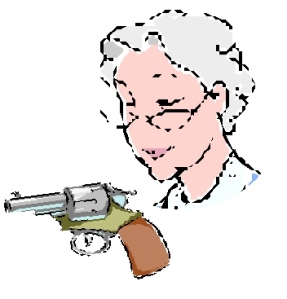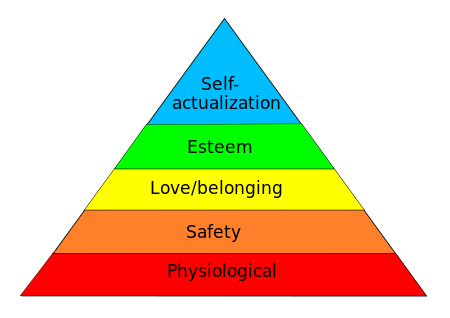 THE WHITE HAIRED SHOOTER
THE WHITE HAIRED SHOOTER
In the last post, we discussed Maslow’s hierarchy of needs. It’s a premise that a person must have basic foundational needs met before they can move on to relational, social and intellectual growth. Safety is a basic foundational need, on the pyramid it follows the physical needs of food, water, clothing and shelter, and health.
Safety is not tangible or easy to quantify need. Complicating that, safety is a highly personalized perception. What one person considers safe, may completely terrorize another.
It is easy to take our safety for granted until a situation arises that threatens us. Natural disasters: hurricane, blizzard, earthquake, drought, tsunami, extreme temperatures, and Political and Social situations: war, terrorism, political strife, poverty, crime and inequality; each bring primary needs like food, water, clothing and shelter to the forefront, along with safety concerns.
Safety should be recognized and treated as a responsibility of an independent adult. That requires understanding the dynamics of situations we are in, which is easy to say, but can be difficult to pin down.
Throughout the earlier years in a woman’s life, roles are fairly well defined. Depending on our health and what road we travel, we are first children, then student, partner, employee, mother, teacher, and caregiver well into the beginning of our elderly years. Physical changes occur gradually and differently for each woman, and our roles also shift at varying rates to less defined ones. Younger women begin to take up what had been our past responsibilities. We are becoming the grandmothers, retirees, elders and role models.
At this stage of life, a woman is typically reliant on life partners, children, friends and those in professional capacities, church affiliates and society in general for her safety. More often than not, what an older woman is relying on is her perception of safety, not the reality of any given situation. She expects to be safe because she’s always been. . It’s not a problem of denial, it’s generally because nothing has happened to cause her to review.
It’s an accepted fact that change becomes more difficult the older we get. Habits of a lifetime, and sometimes just the lack of energy required to change, affect our ability to respond to challenging and unexpected situations. Complications of health problems, medication, arthritis, vision and hearing loss can leave an older woman an easy target, or make responding to an emergency more difficult. Without attention to a positive proactive plan, fear will blossom. And again, fear tends to paralyze our ability to process and assess.
Situational Awareness is training yourself to recognize and assess before you find yourself in harms way. Making it part of your “tool box” of go-to solutions you aren’t required to formulate on the fly gives you an advantage. Good news is: it’s all based on common sense, everyday things that you can easily accomplish. The hardest part is making it a part of your daily life. That requires motivation and commitment. We’re talking life-style change. That has so many benefits, and allows you to continue to “climb up the pyramid.”
The first step in gaining this awareness is keeping yourself in shape, physically and mentally. Paying attention to diet, exercising, getting quality sleep, is a good start. You’ve got to take care of those basic physiological needs before you can move up the pyramid ladder and take an active part in maintaining safety for you and yours. There’s work to do, and just because we’ve moved into our “golden years” doesn’t end that.
The second step is accepting your responsibility for your safety, and those dependent on you for safety.
So, ladies, where are you in meeting your responsibility for your own safety?
Do you give any thought to it?
Are your taking care of your basic physical needs?
Who and what do you depend on to provide safety? Is it real? Or just a perception or wish?
Do you routinely pay attention to your surroundings at home, work, shopping, traveling?
If you find it difficult to answer any of these questions, try writing down your thoughts. Make a list, or begin a daily journal. How did you feel while you were out shopping, visiting, at church, home alone, traveling? Get to know when you are fearful, “zoning out” what is around you, or engaging with other people. Help yourself to understand what you are doing right here and now.
Next post we’ll look at some specific physical, mental and emotional factors that may have an affect on our ability to remain safe.
~~ Peggy
The rain came down,
the streams rose,
and the winds blew and beat against that house;
yet it did not fall,
because it had its foundation on the rock.
— Matthew 7:25
